10 Stop-Motion Films to See Post ParaNorman
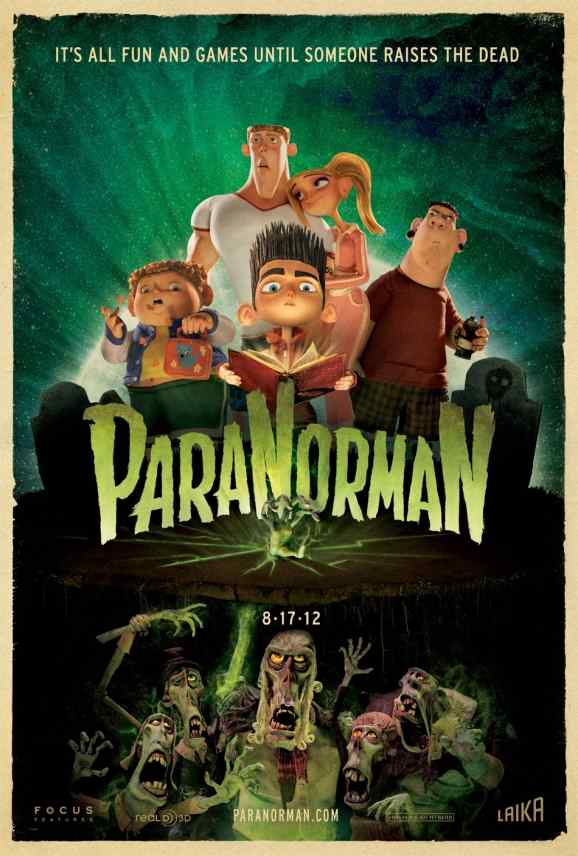 With not one, but three stop-motion features giving Pixar’s Brave a run for its money at the Oscars this year, it would appear that the traditional puppet based style is holding its own against the increasingly popular use of CG in animated films. Indeed, although Brave came out on top, Disney’s Wreck-it Ralph was the only other CG contender for Best Animated Feature Film; puppet veteran Tim Burton was nominated with Frankenweenie, alongside Aardman’s Peter Lord with Pirates! Band of Misfits and relative new comers Sam Fell and Chris Butler with ParaNorman.
With not one, but three stop-motion features giving Pixar’s Brave a run for its money at the Oscars this year, it would appear that the traditional puppet based style is holding its own against the increasingly popular use of CG in animated films. Indeed, although Brave came out on top, Disney’s Wreck-it Ralph was the only other CG contender for Best Animated Feature Film; puppet veteran Tim Burton was nominated with Frankenweenie, alongside Aardman’s Peter Lord with Pirates! Band of Misfits and relative new comers Sam Fell and Chris Butler with ParaNorman.
The technique of stop-motion, produced by projecting a number of still photographs in rapid succession to give the illusion of movement to an inanimate object, is almost as old as the medium of film itself, its earliest use generally being accredited to Albert E. Smith and J. Stuart Blackton for their film A Humpty Dumpty Circus of 1897. Since then it has been used across a range of films, both as a form of special effects in the hands of the late and great Ray Harryhausen and as a stylistic whole, though the painstaking production process in the latter instance has led to a greater number of stop-motion shorts than feature films.
Although some of these films do make it into the mainstream, as was the case with ParaNorman and its competition, many are confined to animation festivals and thus seen by a considerably smaller audience than their CG competition. Here then, without further ado, is a selection of stop-motion films which you may not have seen, but should.
10. The Legend of the Sky Kingdom (2003)
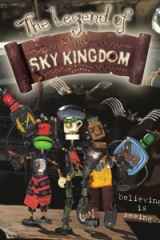 The first ever feature length animation to come out of Africa, The Legend of the Sky Kingdom is a children’s film with an accordingly simplistic good vs. evil plot, which follows a group of children in their escape from a tyrannical orphanage and their search for the mythical Sky Kingdom. Along their way, they meet new friends and face a number of challenges, most of which require only a solid faith in their divine guide to overcome. In terms of story, the film is rather formulaic.
The first ever feature length animation to come out of Africa, The Legend of the Sky Kingdom is a children’s film with an accordingly simplistic good vs. evil plot, which follows a group of children in their escape from a tyrannical orphanage and their search for the mythical Sky Kingdom. Along their way, they meet new friends and face a number of challenges, most of which require only a solid faith in their divine guide to overcome. In terms of story, the film is rather formulaic.
What makes The Legend of the Sky Kingdom so enthralling, however, is its visual style; dubbed ‘junkmation’ by director Roger Hawkins, everything in the film is made from found materials. A combination of budgetary requirement and a nod to African folk art, this colourful and mismatched aesthetic is the most appealing aspect of the film. It is the startling ingenuity of the character models and set pieces, crafted from anything from broken bulldog clips to discarded children’s toys, that are apt to enrapture its audience as they wait on tenterhooks to discover how each new character has been constructed. Dogs are made from brushes and clamps, monkeys from tennis balls, and a cobra from a combination of an iron, an electrical plug, and a length of string. The plot may lack luster, and the voice acting may fall a little flat at times, but for its sheer artistic merit The Legend of the Sky Kingdom is not one to miss.
9. A Town Called Panic (2009)
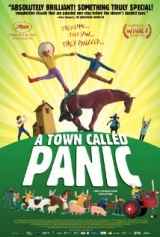 Distributed by Aardman, this spin-off project from the TV series of the same name follows the escapades of a horse and an Indian as they attempt to surprise their friend, a cowboy, on his birthday. Planning to build him a barbecue, the pair mistakenly purchase an astronomically excessive number of bricks. Their attempts to regain control of their best laid plans, needless to say, simply lead to further hijinks as the trio journey through the centre of the earth, encounter troublesome fish people in an aquatic world, and become stranded in the arctic.
Distributed by Aardman, this spin-off project from the TV series of the same name follows the escapades of a horse and an Indian as they attempt to surprise their friend, a cowboy, on his birthday. Planning to build him a barbecue, the pair mistakenly purchase an astronomically excessive number of bricks. Their attempts to regain control of their best laid plans, needless to say, simply lead to further hijinks as the trio journey through the centre of the earth, encounter troublesome fish people in an aquatic world, and become stranded in the arctic.
The film’s animation makes no attempts at grandeur, opting instead for a rather crude and jerky style befitting the figurine like puppets which populate it. This decision is deliberately overt, and rather than making the film feel cheap or unfinished, only adds to its general air of hilarity; the unlikely concept of a cowboy, an Indian, and a horse sharing a house, compounded with the series of patently ridiculous and surreal adventures upon which they embark, should appeal to the humour of almost any audience. Indeed, the aesthetic of the film will be instantly recognisable to some given that the English milk company Cravendale used figures and scenery left over from A Town Called Panic in a number of their TV adverts.
8. The Adventures of Prince Achmed (1926)
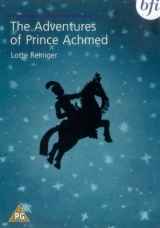 Produced by manipulating cardboard silhouettes in front of a camera frame by frame, Lotte Reiniger’s films are still technically stop-motion despite their deceptively two dimensional nature. The Adventures of Prince Achmed, at slightly over an hour in length, is one of Reiniger’s longest fairy tale films and tells the tale of Prince Achmed from the pages of 1001 Arabian Nights.
Produced by manipulating cardboard silhouettes in front of a camera frame by frame, Lotte Reiniger’s films are still technically stop-motion despite their deceptively two dimensional nature. The Adventures of Prince Achmed, at slightly over an hour in length, is one of Reiniger’s longest fairy tale films and tells the tale of Prince Achmed from the pages of 1001 Arabian Nights.
Made in 1926, before the age of the ‘talkies’, Prince Achmed tells its story through a combination of stylised visuals, brief intertitles, and an orchestrated score. Given their source material and the black silhouette on tinted backdrop visual style, Reiniger’s films were obviously made with children in mind, the shadow puppet aesthetic lending itself the feel of a bedtime story. Prince Achmed, like the rest of Reiniger’s oeuvre, refuses to feel dated even now; her deceptively simplistic style is beautiful to watch, putting a new face on old stories and creating a host of refreshingly timeless animated films.
7. One Night in One City (2007)
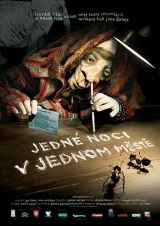 A feature length black comedy from the Czech Republic, One Night in One City is a rather strange and yet fascinating series of interwoven vignettes showing the bizarre goings on of a city’s nightlife behind closed doors. In one room an elderly man creates a circus with his collection of dead insects, whilst his neighbour creates a wilderness in order to enact a bear hunt; meanwhile, the would-be hunter’s wife conducts an affair with a fellow dog lover downstairs. Other highlights include a friendship between a humanoid tree and a fish, a tone deaf musician who becomes a talented artist with the aid of a grisly talisman, and the lewd adventures of two drunks who discover a genie.
A feature length black comedy from the Czech Republic, One Night in One City is a rather strange and yet fascinating series of interwoven vignettes showing the bizarre goings on of a city’s nightlife behind closed doors. In one room an elderly man creates a circus with his collection of dead insects, whilst his neighbour creates a wilderness in order to enact a bear hunt; meanwhile, the would-be hunter’s wife conducts an affair with a fellow dog lover downstairs. Other highlights include a friendship between a humanoid tree and a fish, a tone deaf musician who becomes a talented artist with the aid of a grisly talisman, and the lewd adventures of two drunks who discover a genie.
Devoid of any understandable dialogue, the characters conversing in incomprehensible mumbles, One Night in One City allows the puppets to tell their stories through the expressivity of their movements and facial expressions. Visually, the film is dark, and the character designs bear that trademark misshapen look so common in Eastern European animation, complimenting the strange and twisted nature of the various narratives.
6. The Wind in the Willows (1983)
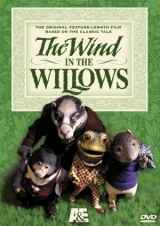 Produced for Thames Television by Cosgrove Hall in 1983, this adaptation of Kenneth Grahame’s classic children’s tale went on to win a BAFTA for Best Children’s Programme in 1984. Featuring the vocal talents of David Jason, Michael Hordern, and Ian Carmichael, The Wind in the Willows is a rather faithful rendering of Grahame’s story of camaraderie and adventure against the backdrop of rural England.
Produced for Thames Television by Cosgrove Hall in 1983, this adaptation of Kenneth Grahame’s classic children’s tale went on to win a BAFTA for Best Children’s Programme in 1984. Featuring the vocal talents of David Jason, Michael Hordern, and Ian Carmichael, The Wind in the Willows is a rather faithful rendering of Grahame’s story of camaraderie and adventure against the backdrop of rural England.
Dressing Grahame’s esteemed story with a Disney-esque use of musical numbers and puppet designs which can only be described as ‘cute’, it is no surprise that The Wind in The Willows succeeded as it did; it even spawned a TV series which ran for 52 episodes between 1984 and 1990, continuing the story of the Riverbank characters.
5. $9.99 (2008)
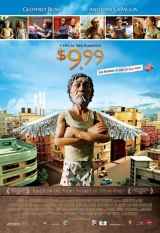 $9.99 is a collaborative effort between Australian director Tatia Rosenthal and Israeli screenwriter Etgar Keret, focusing on the lives of the residents of a Sydney apartment block. The building’s tenants are, for the most part, disenchanted with life; when a cynical ‘angel’ posing as a homeless man, and voiced by Geoffrey Rush, begins touching the lives of the neighbours, their personal crises all come to a head.
$9.99 is a collaborative effort between Australian director Tatia Rosenthal and Israeli screenwriter Etgar Keret, focusing on the lives of the residents of a Sydney apartment block. The building’s tenants are, for the most part, disenchanted with life; when a cynical ‘angel’ posing as a homeless man, and voiced by Geoffrey Rush, begins touching the lives of the neighbours, their personal crises all come to a head.
Central to the film is unemployed Dave Peck, who orders a book on the meaning of life for the titular price of $9.99. The interweaving stories examine the meaning of happiness in the present day, placing an emphasis on personal relationships and a healthy sense of optimism. With a cast of engaging characters rendered as puppets of an extremely haptic nature, $9.99 wraps its message in an enthralling narrative which manages to avoid the risk of becoming heavy handed.
4. The Book of the Dead (2005)
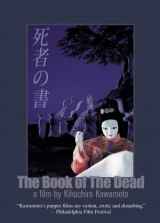 The second feature length film of Japanese animator Kihachirō Kawamoto, The Book of the Dead is set in 8th century Japan during the introduction of Buddhism. When young noblewoman Iratsume becomes obsessed with the copying of new scriptures, she witnesses a divine apparition and feels compelled to pursue it. She soon discovers, however, that the vision is not the Buddha, but the troubled spirit of Prince Ōtsu who was separated from the woman he loved on the day of his execution.
The second feature length film of Japanese animator Kihachirō Kawamoto, The Book of the Dead is set in 8th century Japan during the introduction of Buddhism. When young noblewoman Iratsume becomes obsessed with the copying of new scriptures, she witnesses a divine apparition and feels compelled to pursue it. She soon discovers, however, that the vision is not the Buddha, but the troubled spirit of Prince Ōtsu who was separated from the woman he loved on the day of his execution.
Kawamoto’s puppets are animated with true skill, their movements startlingly lifelike; even the fabrics and flowing hair of the characters respond to the wind as though there were a real breeze. Indeed, the craftsmanship of The Book of the Dead is remarkable, from the fluid animation and the immaculately constructed sets to the skillful lighting which creates more than a fair imitation of real daylight.
3. Street of Crocodiles (1986)
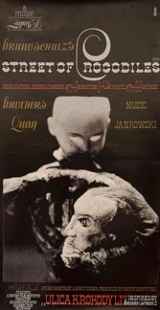 Perhaps the best known of the Quay Brothers’ films, Street of Crocodiles is a haunting twenty minute short inspired by Bruno Schulz’s 1934 book of the same name. Bereft of dialogue as it is, the film relies on the audience’s inference to discern a recognisable a plot among the bizarre events on screen.
Perhaps the best known of the Quay Brothers’ films, Street of Crocodiles is a haunting twenty minute short inspired by Bruno Schulz’s 1934 book of the same name. Bereft of dialogue as it is, the film relies on the audience’s inference to discern a recognisable a plot among the bizarre events on screen.
With its muted palette of greys, blues and browns, and its found object aesthetic, the film has an air of unease and isolation which compounds the position of the sole ‘human’ protagonist among the other rather sinister figures composed of broken dolls and other objects. Emphasis is placed on the mechanical and the uncanny, screws freeing themselves from the floorboards and relocating, and a tailor replacing the head of the protagonist. Bizarre as it is, Street of Crocodiles is fascinating in its capacity for interpretation, not to mention the Quay Brothers’ striking visual style.
2. Alice (1988)
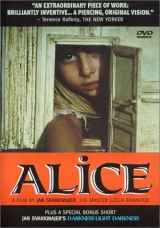 A combination of live action and stop-motion, Alice is the first feature film from Czech animation master Jan Švankmajer. Despite sharing source material with Disney’s Alice in Wonderland, Švankmajer’s film is a considerably darker spin on Carroll’s novel; his White Rabbit is a far cry from the bumbling character of the Disney film, taking the form of a sawdust filled taxidermy rabbit.
A combination of live action and stop-motion, Alice is the first feature film from Czech animation master Jan Švankmajer. Despite sharing source material with Disney’s Alice in Wonderland, Švankmajer’s film is a considerably darker spin on Carroll’s novel; his White Rabbit is a far cry from the bumbling character of the Disney film, taking the form of a sawdust filled taxidermy rabbit.
Much like the Quay Brothers, on whom he was an influence, Švankmajer crafts his puppets from old and found objects. The caterpillar assembles himself from an assortment of sewing materials, and the denizens of Wonderland are composed of animal bones; add to this the White Rabbit’s constant need to eat the sawdust that spills from his own stomach, and it becomes difficult not to associate the Wonderlanders with the undead.
Whereas Carroll’s original tale uses the fantastical titular Wonderland and a series of logic puzzles to show Alice’s adolescent struggles to come to grips with the world around her, Švankmajer’s film has the girl’s whole adventure take place indoors, the dangers presented to her being chimerical combinations of the domestic objects around her. As such, Švankmajer’s found object style and Surrealist bent are a rather complimentary fit to the source text, and make for an incomparable reading of a much adapted tale.
1. The Tale of the Fox (1930)
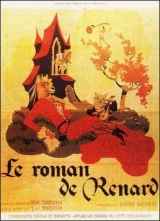 One of the earliest feature length stop-motion films, Wladyslaw Starewicz’s The Tale of the Fox is a fantastic example of puppet animation. Based on the tales of Reynard the fox from European folklore, the film follows the exploits of the vulpine titular character as he tricks and exploits his fellow animals to fill his own belly.
One of the earliest feature length stop-motion films, Wladyslaw Starewicz’s The Tale of the Fox is a fantastic example of puppet animation. Based on the tales of Reynard the fox from European folklore, the film follows the exploits of the vulpine titular character as he tricks and exploits his fellow animals to fill his own belly.
Starewicz’s puppets are animated in every sense of the word, their remarkably expressive faces giving a mesmerising illusion of life. The archetypes of French society are transposed upon the animal kingdom, their status corresponding to their position in the food chain. The lion, naturally, is king, and the rabbits and chickens are the clergymen and townsfolk. The problem that arises in this anthropomorphism, however, is that Reynard’s attempts to eat his fellow citizens thus become attempts at cannibalism, and the king’s attempts to capture the fox become the hunt for a murderer.
Personification problems aside, The Tale of the Fox is a hugely entertaining watch; the wiles of the charismatic fox are punctuated by scenes of Punch and Judy style comic violence as he unfailingly outsmarts his opponents. The figure of the trickster fox can be also be seen in Disney’s Robin Hood (1973), and Starewicz’s film is obviously drawn on by Wes Anderson in his Fantastic Mr. Fox of 2009, his puppets bearing a great resemblance to those of the earlier film. If you loved Fantastic Mr. Fox, you’ll love this.
Happy Watching
So there you have it, ten stop-motion films to satiate your love of the style post ParaNorman. This list is far from exhaustive, and I have endeavoured, in my selection, to choose a diverse range of films in the hope that it will encourage fans of the style to explore the larger bodies of work of the directors represented here, and others besides. Some are strange, and many are wonderful, so go, discover, and most of all, enjoy.
What do you think? Leave a comment.
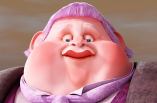
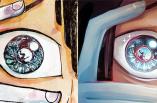



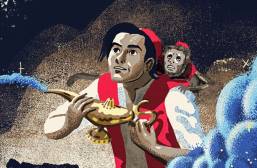
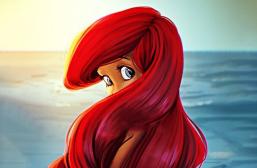
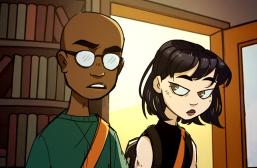
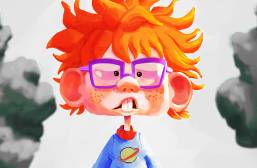
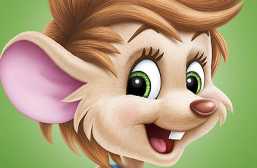

Great list of treats here, I didn’t expect to see these many lesser known titles.
You even managed to blast in Adventures of Prince Achmed in there, good choice.
Thank you, I tried to avoid titles that people are likely to have heard of; there are so many great films out there that deserve recognition, but have sunk into obscurity. I’m glad to hear from a fellow fan!
Appreciate not just Wallace and Gromet over and over again.
But Wallace and Gromit is a basic staple of this animation.
Neco z Alenky is my favorite animation that I’ve watched recent years. It is captivating but yet uncomfortable. What I love about this film is it holds on to the bizarre, and sometimes frightening world Lewis Carrol created.
I absolutely love this film, and Svankmajer’s work in general. I’m actually writing my final year dissertation on some of his films, along with a couple of the Quay Brothers’.
You selected the correct version of The Wind in the Willows. It is, without a doubt, the best of them. Everything about is wonderful. It has magnificent animation and looks beautiful, and is written and played excellently.
I’m glad you approve. I wasn’t sure how much exposure it’d had outwith the UK, my own memories of it being from childhood. I was a little apprehensive when I watched it again before writing this article, thinking it might not live up to my remembrance, but I enjoyed it just as much now as I did then, if not more.
WITW started out with cute songs in the beginning but most episodes depended less on songs and more on the depth & melancholy of the stories. Some of the songs were actually quite moving – for example, the exceptional music of ‘Piper at the Gates of Dawn’ & ‘Wayfarers All’ are anything but cute. Thanks for mentioning this intelligent stop-motion series, more people need to know about it.
Great article. Is this in any particular order? -as in what you recommend watching?
Thank you. It’s in a rough order, but each film has its own merits; ideally you could just work your way through them.
OK, this is a first. I have not seen ANY of these!
Guess I better get watching.
Great list that has really sparked an interest.
Lucky you! I hope you enjoy them.
This is an awesome list. I haven’t heard of any of these before, but ParaNorman has become a new favourite of mine and I was hoping to track down more stop-motion films at some point. Thanks for the recs.
You’re more than welcome. I’m guessing you’ve seen the usual favourites like The Nightmare Before Christmas and Coraline? You might be interested to know that Laika are working on a new film at the moment, due for release next year, called The Boxtrolls. There’s no trailer yet, but there’s some nice concept art floating about.
Thanks for the list! Now I need to find these titles and watch them, I’ve just recently gotten into lesser known movies and this is such a big help =)
You’re welcome! The majority, if not all of these titles, should be fairly easy to find through Amazon. It’s also worth checking YouTube.
Thank you for this! I’ve always admired the stop-motion technique, since Wallace and Gromit or Chicken Run. As a Tim Burton fan, I must say I was especially impressed by Frankenweenie: such an artistic flair! I haven’t watched any of these films, excited to start
How ’bout Mary and Max.
This was a really great list. I was really excited to see the Tale of the fox in their, thats a classic for me when it comes to Stop Motion films. THis was really diverse